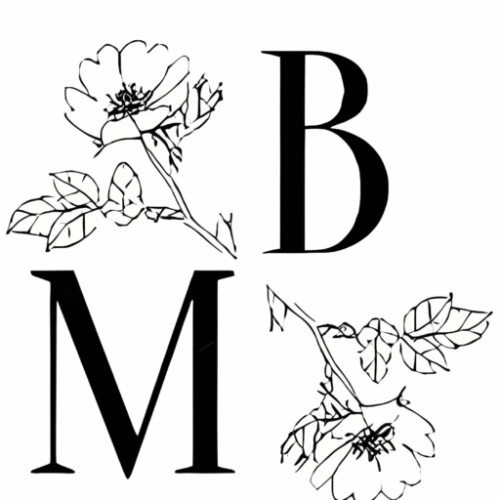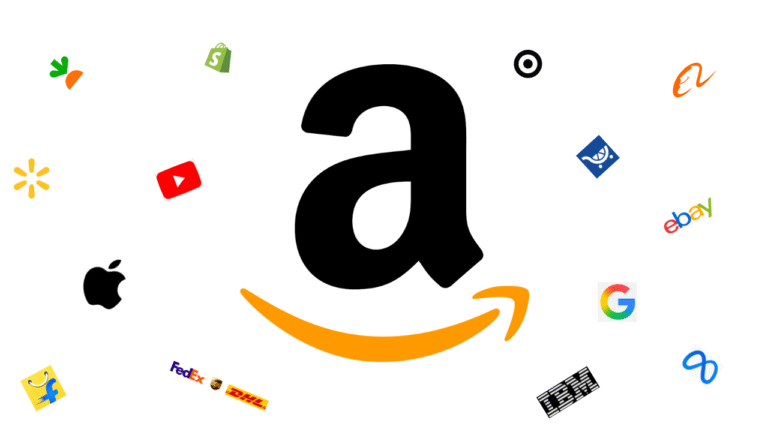Nike dominates the global athletic apparel and footwear industry through innovation, strong branding, and endorsements from high-profile athletes. The “Swoosh” logo symbolizes athletic aspiration and cultural significance.
Even as a dominant player, Nike faces fierce competition from established sportswear brands and agile athleisure disruptors, all fighting for a share of the multi-billion-dollar market.
This analysis examines Nike’s key competitors’ strategies and market positioning in athletic footwear, performance sportswear, and the growing activewear sector.
Understanding this competitive landscape is essential for recognizing Nike’s dominance and the evolving dynamics of the global sportswear industry.
Adidas
Headquarters: Herzogenaurach, Germany
Founded: 1949
Key Focus Areas: Footwear, sports apparel, soccer, running, fashion collaborations
Adidas is Nike’s biggest global competitor, predating Nike’s history. The brand has a strong presence in key markets, including Europe, North America, and Asia, and is well-known in soccer (football) through major team and player sponsorships.
To compete with Nike, Adidas combines performance innovation with lifestyle appeal. The introduction of Boost technology in running shoes has made a notable impact due to its energy return and cushioning.
Additionally, collaborations with cultural figures like Kanye West (Yeezy) and Pharrell Williams have created popular, trendy footwear and apparel that appeal to fashion-conscious consumers. Adidas also aimed to expand its market share through its acquisition of Reebok, focusing on fitness and aerobics, but sold Reebok in 2021 as part of its strategic adjustments.
Today, Adidas continues to challenge Nike in soccer, running, and the growing athleisure market, where performance meets everyday style.
Key Strengths
- Deep Heritage in European Sports
- High-Impact Collaborations
- Sustainability Efforts
- Strong Presence in Soccer
WOW @QuincyHall400 🥇🔥 There’s your place among the 400m greats.#Paris2024 #YouGotThis pic.twitter.com/9F8fm4CylL
— adidas (@adidas) August 7, 2024
Puma
Headquarters: Herzogenaurach, Germany
Founded: 1948
Key Focus Areas: Sports lifestyle, motorsports, fashion
Puma positions itself as a sporty and fashionable brand aimed at younger, trend-conscious consumers. While smaller than Nike and Adidas, Puma stands out in lifestyle wear and has made remarkable gains in motorsports sponsorships and celebrity collaborations like Fenty x Puma and Dua Lipa.
Their bold marketing approach emphasizes a fashion-forward image, blending athletic functionality with high-street style.
This strategy allows Puma to effectively target niche markets, making it a strong player in the lifestyle-performance segment.
Key Strengths
- Bold Marketing
- Puma’s Partnerships
- Pricing Strategy
VAMOS! 🥇T13 5000m.#ForeverFaster #Paris2024 pic.twitter.com/R8wr6ugbZC
— PUMA (@PUMA) August 31, 2024
Under Armour
Headquarters: Baltimore, USA
Founded: 1996
Key Focus Areas: Performance apparel, fitness, sports technology
Under Armour launched in the mid-1990s with innovative compression apparel, quickly becoming popular among athletes. The brand emphasizes athletic dedication and innovation, offering proprietary fabrics like HeatGear and ColdGear that provide performance benefits, driving its growth in the US.
It has invested in sports technology, integrating features like connected footwear and fitness tracking. Endorsements from athletes like Stephen Curry enhanced its performance image.
Despite recent financial challenges, Under Armour stays competitive in the North American performance apparel and footwear markets, focusing on innovation and athlete needs to rival Nike.
Key Strengths
- Strong Brand Image
- Endorsements with High-Profile Athletes
- Technological Innovations
Congratulations, @FreddieFreeman5
— Under Armour (@UnderArmour) October 31, 2024
2X World Series Champion
2024 World Series MVP pic.twitter.com/MIg0BGVJ8U
Read the SWOT Analysis of Amazon
New Balance
Headquarters: Boston, USA
Founded: 1906
Key Focus Areas: Running shoes, walking shoes, lifestyle sneakers
New Balance stands out in the competitive landscape through its commitment to quality craftsmanship, an extensive range of sizes, and domestic manufacturing in the U.S. and U.K.
Unlike many competitors, New Balance emphasizes the technical performance of its footwear rather than celebrity endorsements, cultivating a loyal customer base that values functionality and the “Made in USA/UK” appeal.
Competing directly with Nike in the running and lifestyle markets, New Balance offers a strong alternative for consumers seeking fit and durability without the hype.
Their focus on specific needs, like wide feet and pronation control, has carved out a significant niche in the performance running segment.
Key Strengths
- High-Quality Craftmanship
- Wide Size Options and Comfort-Focused Design
- ‘Made in USA/UK’ Appeal
🐐 Season. pic.twitter.com/eXEnVCPkB0
— New Balance (@newbalance) October 31, 2024
Lululemon Athletica
Headquarters: Vancouver, Canada
Founded: 1998
Key Focus Areas: Yoga wear, athleisure, training gear
Lululemon Athletica has emerged as a dominant player in the premium activewear market, initially gaining immense popularity for its high-quality yoga apparel designed for women.
Lululemon’s success is largely attributed to its strong direct-to-consumer model, which fosters a loyal community around the brand through engaging in-store experiences and online interactions. The company’s emphasis on premium materials, stylish designs, and an active lifestyle resonates with affluent consumers.
It has strategically expanded its product offerings to include menswear, footwear, and gear for running and training, allowing it to increasingly position itself as a direct competitor to Nike in the high-end apparel and lifestyle segments.
Key Strengths
- Premium Quality and Stylish Athletic Wear
- Community-Driven Marketing Strategy
- Expanding Men’s and Footwear Lines
We’re feeling chatty today. Ask us about @jordanclarksons' fit ⬇️ pic.twitter.com/F7WE5qx5r1
— lululemon (@lululemon) October 8, 2022
ASICS
Headquarters: Kobe, Japan
Founded: 1949
Key Focus Areas: Running shoes, athletic training, sports science
ASICS is a highly respected brand in the world of performance running. It is known for its GEL cushioning technology that offers excellent shock absorption. ASICS is deeply committed to biomechanical research and development.
This brand primarily appeals to serious athletes and marathon runners who prioritize performance and injury prevention.
Although its overall global market share may be smaller compared to larger competitors, ASICS holds a significant and influential position in the technical running shoe market, competing directly with Nike’s performance running products.
Its strong focus on research-backed technology and dedication to addressing the specific needs of runners has cultivated a loyal following in this demanding industry.
Key Strengths
- Exceptional Performance and Comfort Technology
- Strong Following Among Amateur and Professional Runners
- Emphasis on Injury Prevention and R&D
A more comfortable run leads to a calmer you. Introducing the GEL-CUMULUS™ 27 shoe: feel comfort, find calm.
— ASICS Europe (@ASICSeurope) March 19, 2025
🛒 Shop now: https://t.co/0G5wuIrVlS#SoundMindSoundBody #GELCUMULUS pic.twitter.com/Ea5hIrU7gR
Skechers
Headquarters: Manhattan Beach, USA
Founded: 1992
Key Focus Areas: Comfort shoes, lifestyle sneakers, walking shoes
Skechers strategically targets a distinct customer segment compared to Nike, primarily focusing on comfort-oriented and casual lifestyle footwear.
Its business model emphasizes affordable pricing and broad distribution through mass-market retailers, appealing to families and older consumers seeking comfortable and accessible footwear options.
Although Skechers is not traditionally known for high-performance athletic gear, it has emerged as a global leader in the casual footwear market, offering a compelling value proposition to a significant portion of consumers.
The company’s comfort-first technologies, such as Arch Fit and Memory Foam, resonate with those prioritizing everyday comfort and support.
Key Strengths
- Affordable Pricing with Mass-Market Appeal
- Comfort-First Technology (Arch Fit, Memory Foam)
- Aggressive International Expansion
Reebok
Headquarters: Boston, USA
Founded: 1958 (UK origin)
Current Owner: Authentic Brands Group
Key Focus Areas: Fitness, training, retro sneakers
Reebok, currently owned by Authentic Brands Group, has a unique identity distinct from its former parent company, Adidas. Historically known for its aerobics footwear and strong ties to the CrossFit fitness movement, Reebok has maintained its relevance by leveraging its fitness heritage and the lasting appeal of its retro sneaker styles.
It competes with Nike in the gym and training categories, particularly through its specialized footwear and apparel for various fitness disciplines. The revival of vintage fashion trends has increased demand for Reebok’s classic sneaker designs, giving it a competitive advantage in the lifestyle market.
Key Strengths
- Strong Retro Branding and Fitness Heritage
- Solid Presence in Gym and Cross-Training Categories
- Competitive Pricing and Strong Brand Recall
#NationalWearRedDay is about more than red—it’s about heart health, honoring survivors and raising awareness for the work of the American Heart Association. Learn more about Reebok’s support of the Life is Why campaign here: https://t.co/s2aSZJiBxh pic.twitter.com/JQWp4YJvR8
— Reebok (@Reebok) February 7, 2025
Fila
Headquarters: Seoul, South Korea (Italian origin)
Founded: 1911
Key Focus Areas: Sportswear, tennis, lifestyle sneakers
Fila has experienced a significant rally in the athleisure market, largely driven by the renewed popularity of its retro-inspired sportswear and footwear. While not primarily recognized for cutting-edge technical innovation, Fila’s strength lies in tapping into fashion-forward trends and leveraging its nostalgic appeal.
The brand has successfully positioned itself as a stylish and accessible alternative to Nike in the affordable sports-lifestyle segment, particularly among younger consumers who appreciate its vintage aesthetic. Strategic collaborations and a strong presence in Asian markets have further contributed to Fila’s recent success.
Key Strengths
- Stylish Retro Design Resurgence
- Strong Market Share in Asia
- Accessible Price Points and Fashion Collaborations
Li-Ning
Headquarters: Beijing, China
Founded: 1990
Key Focus Areas: Basketball, running, badminton, fashion-sportswear, Chinese cultural fusion
Li Ning was named after its Olympic gold medalist founder, Li Ning. The brand has quickly transformed from a leading Chinese sportswear company into a rising global competitor. Initially focused on the domestic market, it has since expanded internationally, particularly in basketball and running. Moreover, Li-Ning incorporates traditional Chinese design elements, appealing to both local and global consumers.
The significant investments in performance technology have produced advanced cushioning systems, rivaling global leaders. Endorsements from NBA stars like Dwyane Wade have further elevated its credibility.
By participating in global fashion weeks and promoting the “China Chic” trend, Li-Ning has merged sportswear with high fashion. As a result, it now stands as both a performance brand and a cultural influencer.
Key Strengths
- Innovation in Material and Cushioning Technology
- Growing Global Presence in Fashion and Lifestyle
- Strong Fusion of Performance and Chinese Cultural Aesthetics
- Strategic Endorsements in Basketball (NBA)
Conclusion
Nike remains a powerful leader in the global athletic market, yet it faces fierce competition from rivals like Adidas and Puma, who leverage their rich histories and fashion collaborations. Under Armour stresses performance innovation and endorsements, while New Balance stands out with its quality and domestic manufacturing.
The rise of athleisure brands like Lululemon demonstrates a shift in consumer preferences, blending performance with lifestyle. Niche players like ASICS target serious runners, while value-oriented brands like Skechers focus on comfort. Reebok and Fila are tapping into retro trends. The Chinese brands like Li-Ning deliver performance tech, embracing cultural aesthetics.
Understanding this competitive landscape is crucial. It highlights Nike’s strengths and reveals shifting trends in the multi-billion-dollar sportswear industry. Continuous innovation and strategic positioning are essential for success.
I hope you find this article on ‘Nike Competitors and Alternatives’ helpful. If so, please read our other articles.
Share this article on your socials.


